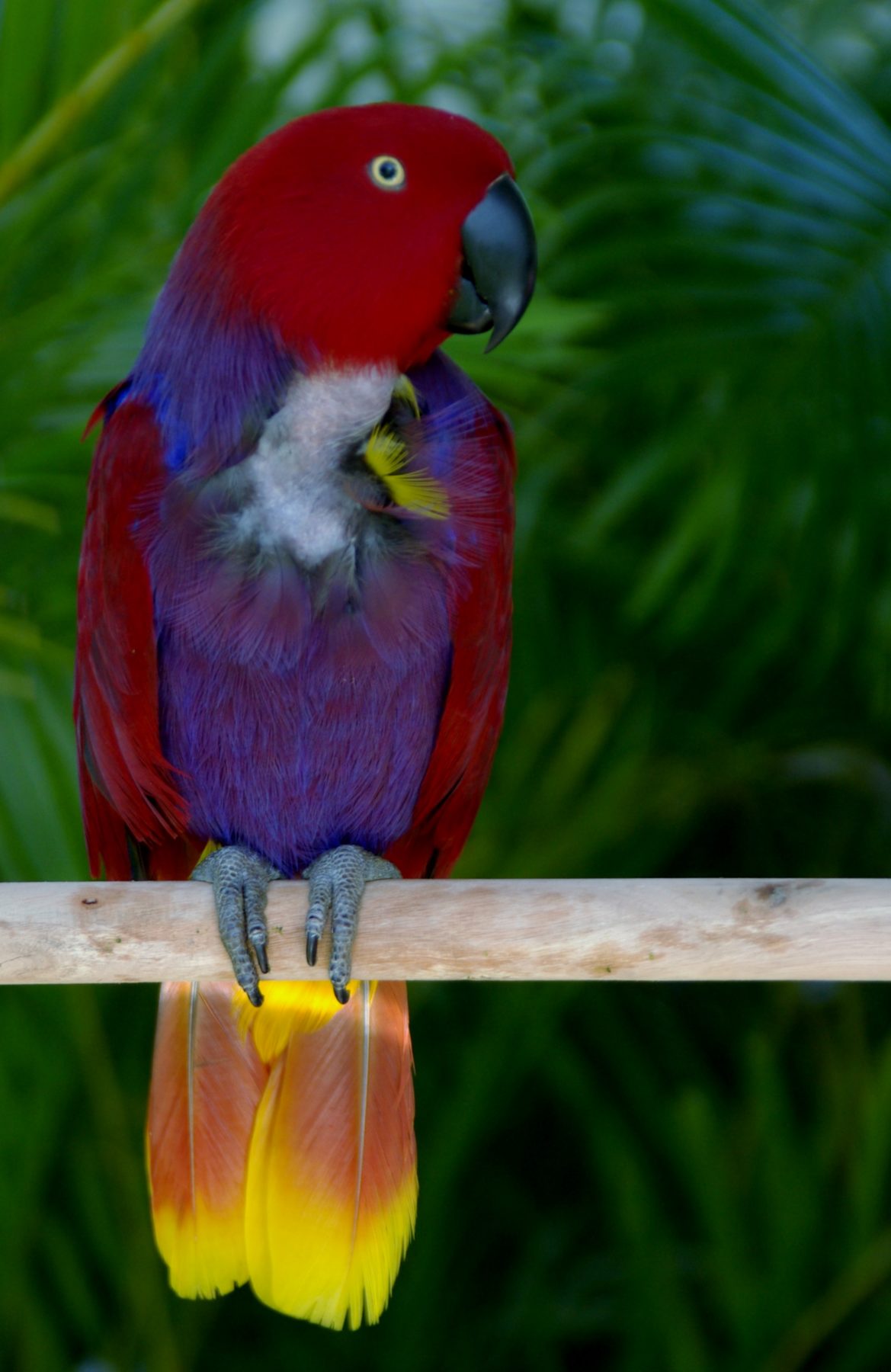The eclectus parrot is mind-bendingly beautiful

Bec Crew
Bec Crew

NATIVE TO THE rainforests of the Solomon Islands, New Guinea, Indonesia, and the north-eastern tip of Australia, the eclectus parrot’s most distinctive feature is its extreme sexual dimorphism – the males are always green and the females are always red.
So often in nature, the male of the species gets all the bells and whistles, but when it comes to the eclectus parrot, the beauty is shared. In fact, the female might just edge out the male as being the most stunning of the pair, with all that red, purple, and blue plumage.
Researchers think there’s a very good reason for why they ended up this way. Eclectus parrots are polygynandrous, which means both the males and the females have multiple mates each breeding season. Essentially, it’s a free-for-all, and that means things can get very complicated.
The females nest in the hollows of large trees that can run up to 6 metres deep. Once they are old enough to breed, they will scout out the perfect nest and defend it with their life.
The females spend almost their entire existence in their nest hollows, and their red colouring acts as both a warning sign to rival females to stay away, and a beacon to males.
When they want to be seen, the females will sit at the entrance of their nest, their red colouring piercing through the forest foliage. When they want to hide, they can move deep inside the hollow, where the red helps to blend them in with the darkness.
The males, with their primarily green plumage, are able to camouflage themselves as they fly from nest to nest – for distances of up to 20 km – visiting their various mates.
There are at least nine known subspecies of eclectus parrot. The Australian eclectus parrot (E. r. macgillivrayi) is the only subspecies native to mainland Australia, found in the Iron and McIlwraith Ranges of the eastern Cape York Peninsula in Queensland. It’s also the largest subspecies, at 45 cm long.
The only other subspecies native to Australia is the New Guinea red-sided eclectus parrot (E. r. polychloros), found in the Torres Strait Islands, New Guinea, and the Kai Islands of Indonesia.
Perhaps the most beautiful subspecies is Vosmaer’s eclectus (E. r. vosmaeri) from the North Maluku province of Indonesia. The undertail of the female Vosmaer’s eclectus is bright yellow, and honestly, it’s just a breathtaking bird:

While the eclectus parrot as a species is not endangered, so many of the subspecies’ populations are fragmented, tiny, and in regions that are difficult for researchers to access. In Queensland, the Australian eclectus parrot is classified as vulnerable, and bushfires, poaching, and logging are major threats.
It doesn’t help that, despite all the mate-swapping that goes on, these parrots have absolutely dismal rates of breeding success. Christina N. Zdenek from the University of Queensland reports that palm cockatoos have one of the lowest overall breeding success rates of any parrot, “second only to Australia’s eclectus parrot”.
And let’s not get into the fact that, if they end up in a sub-par nest with a male and a female chick, the mothers will peck the male chicks to death so they can focus their efforts on the female.
We’ll leave you with something much nicer to think about, which is Madonna, the very chatty eclectus parrot:




